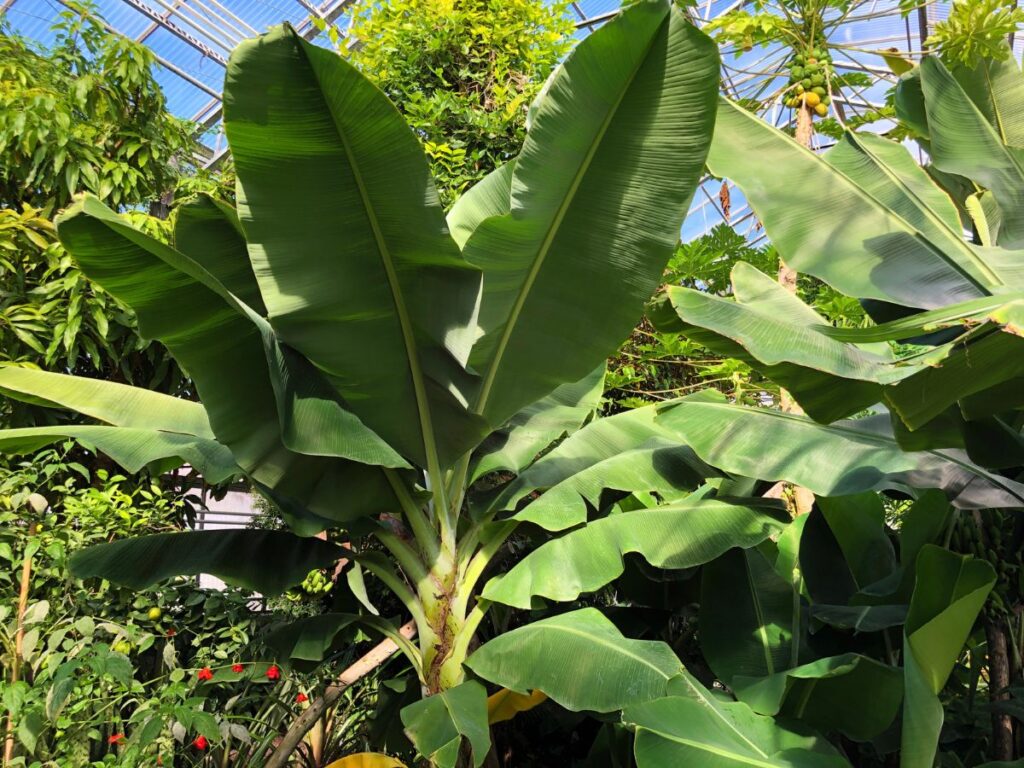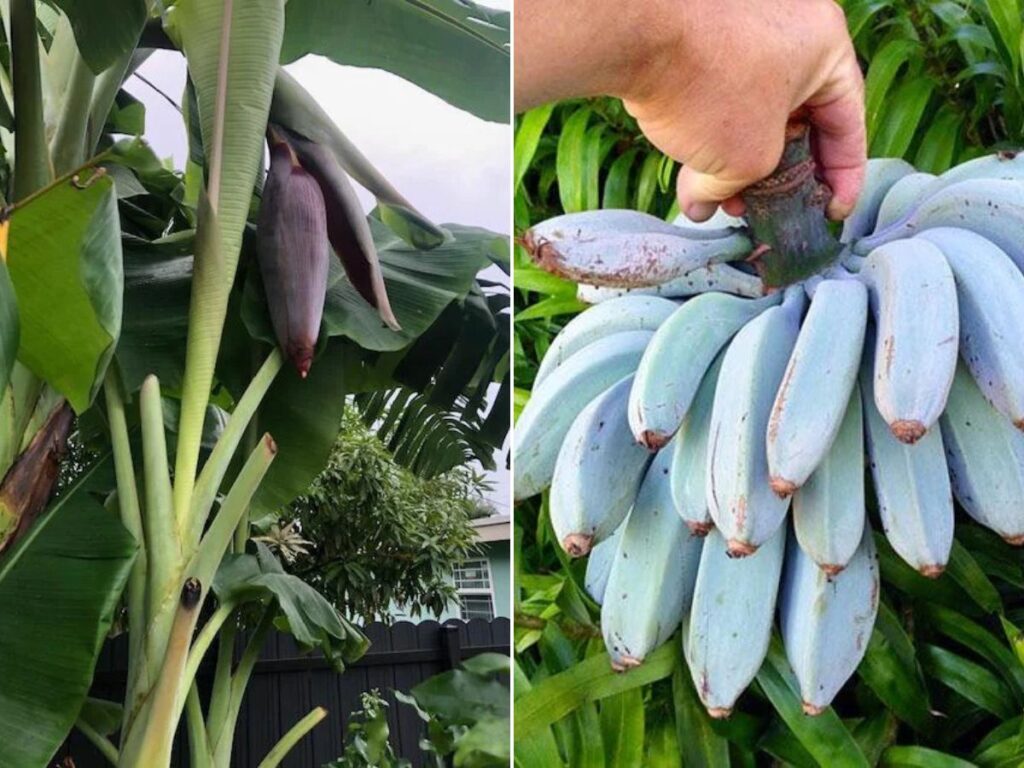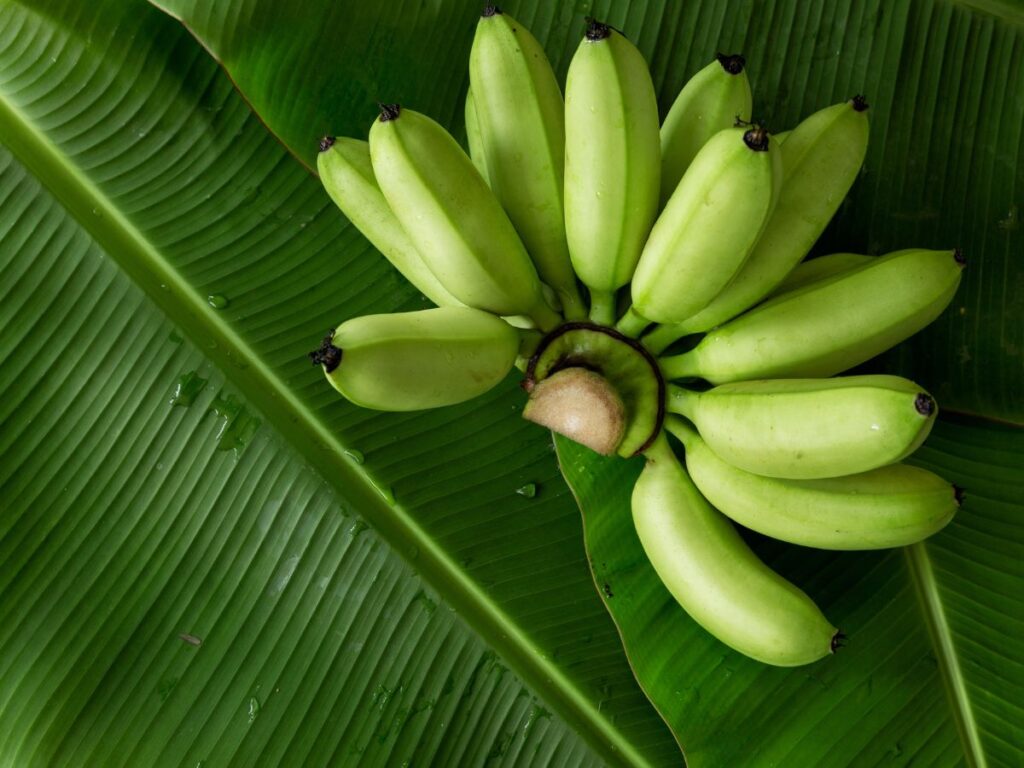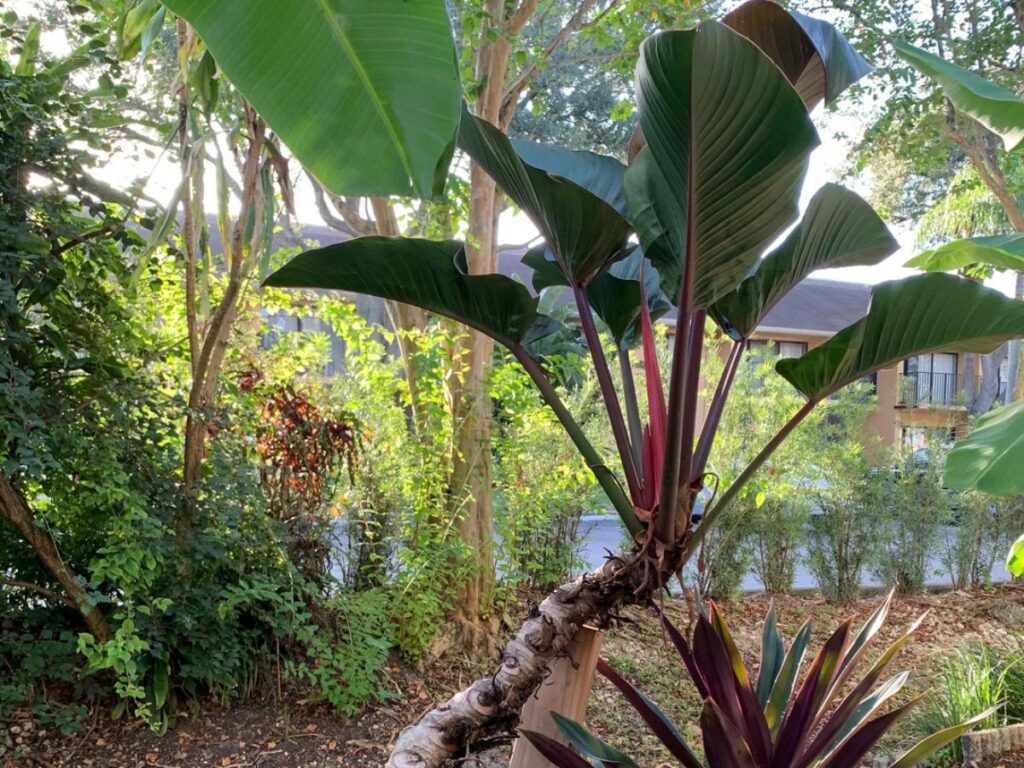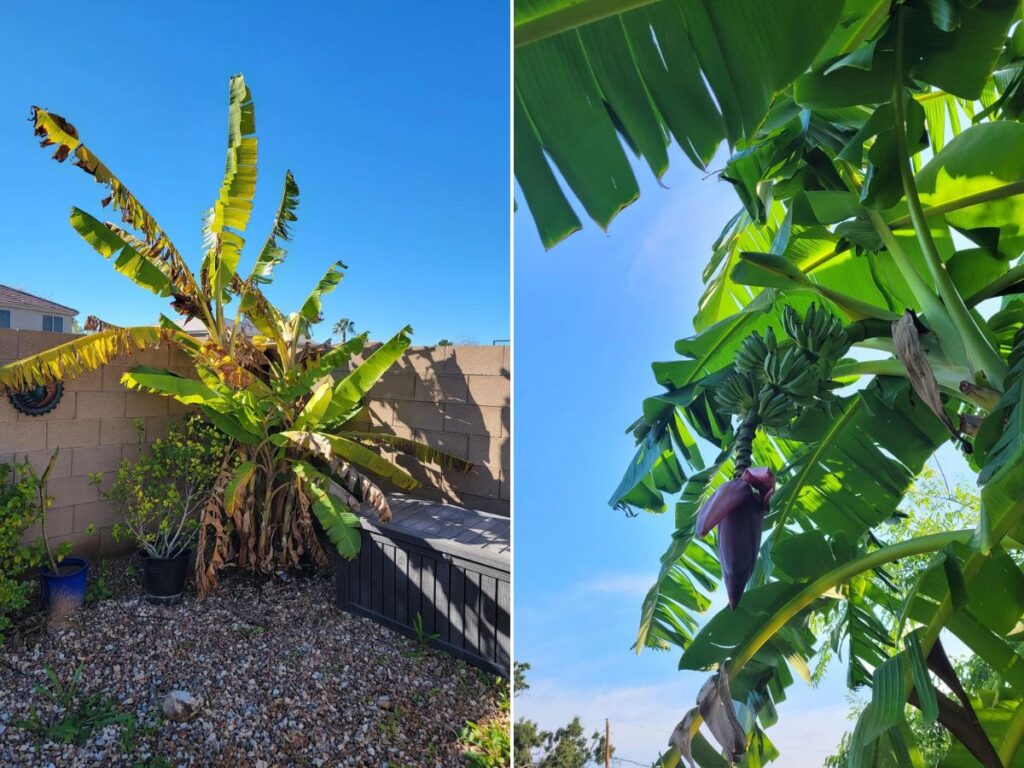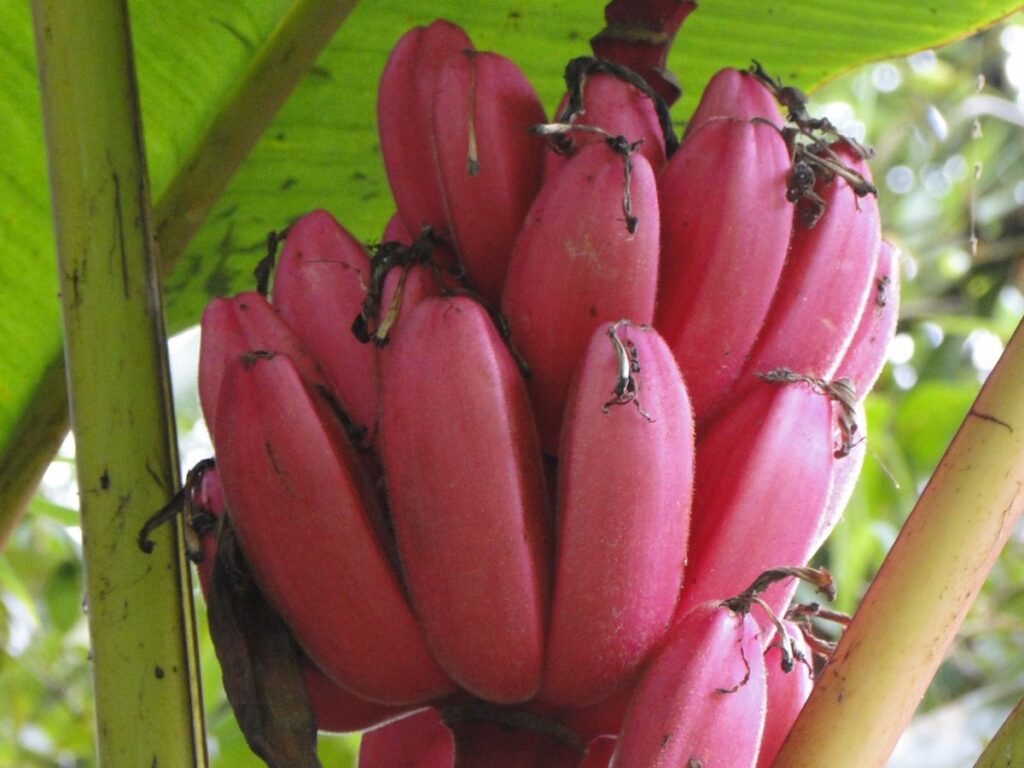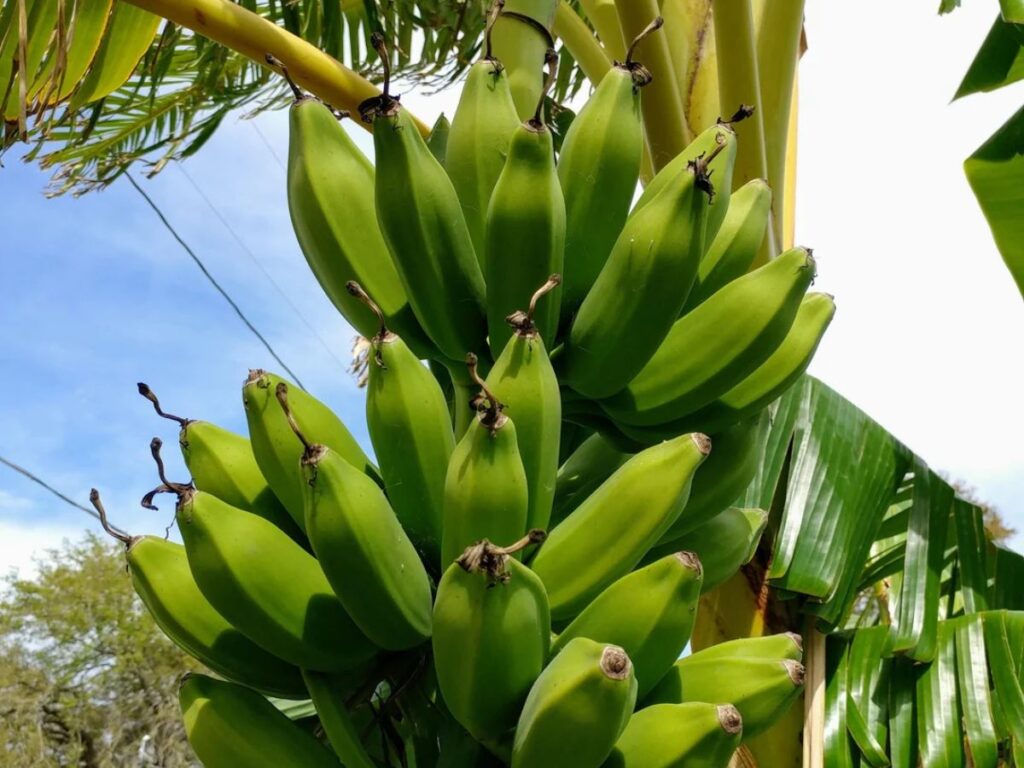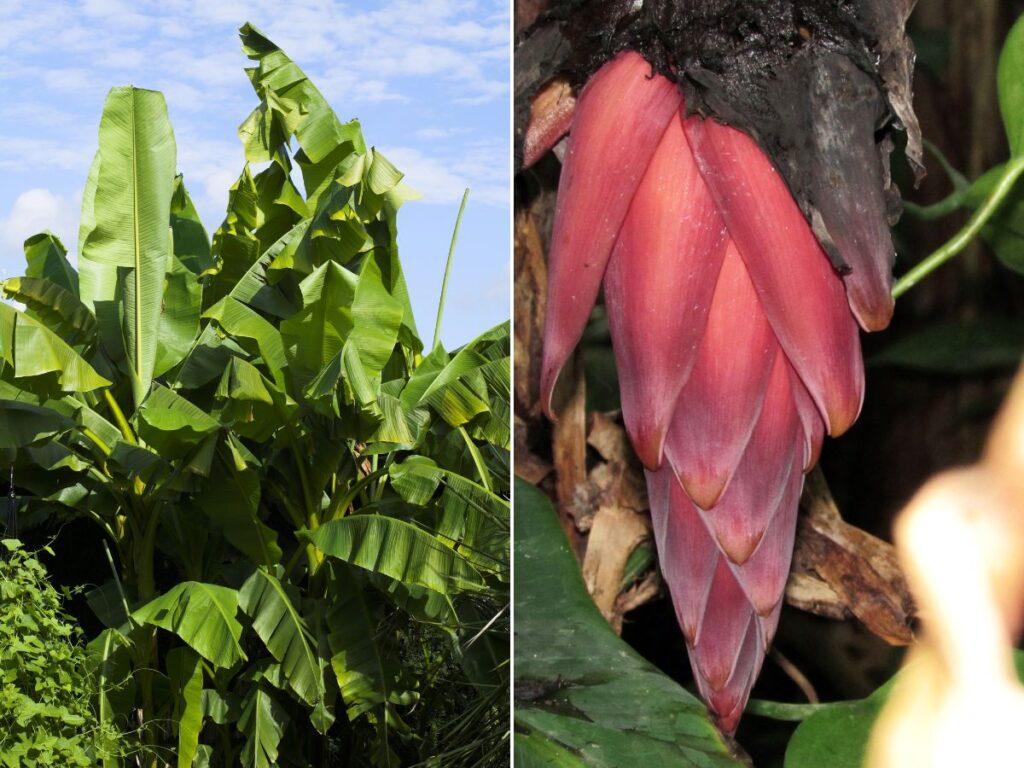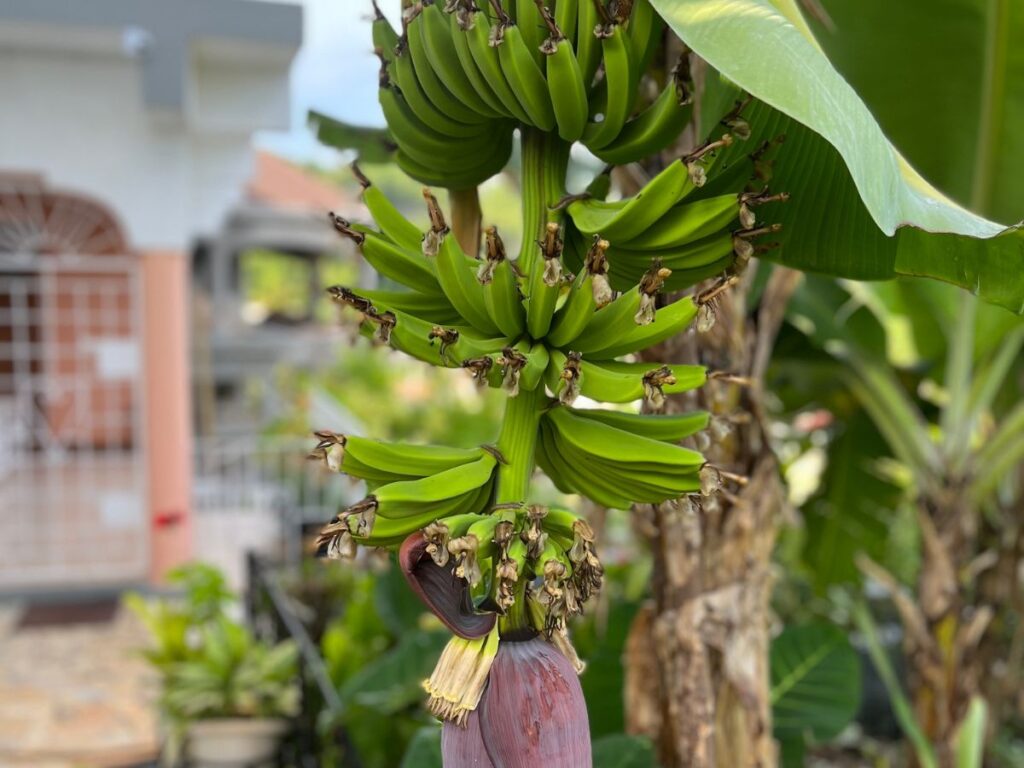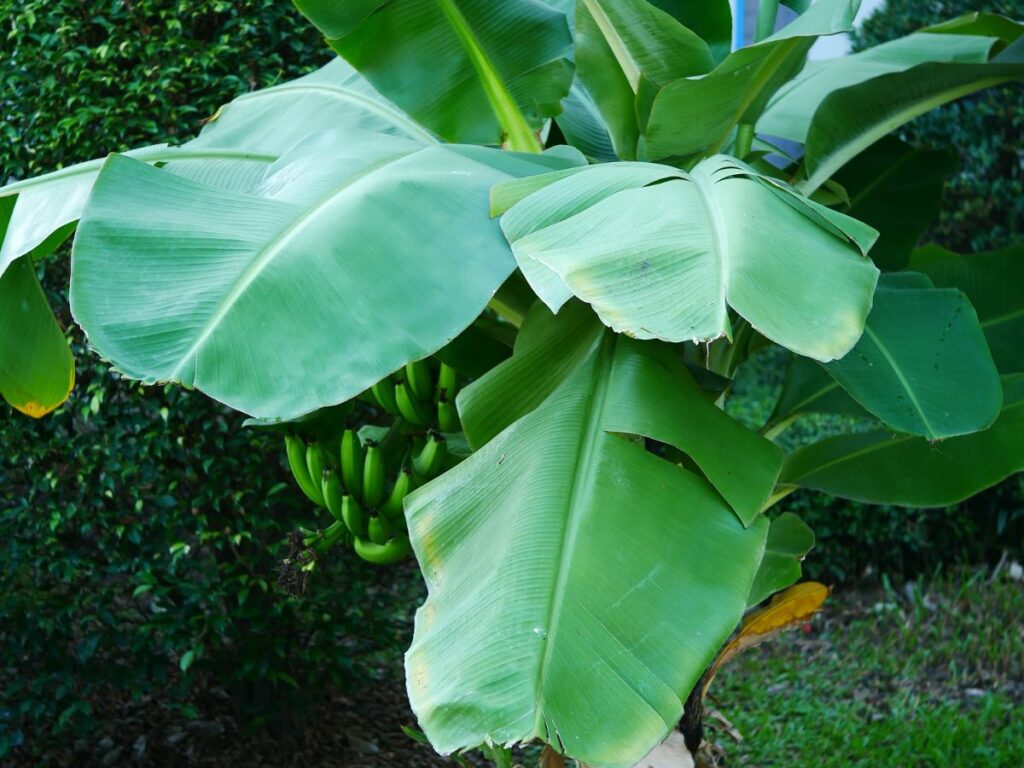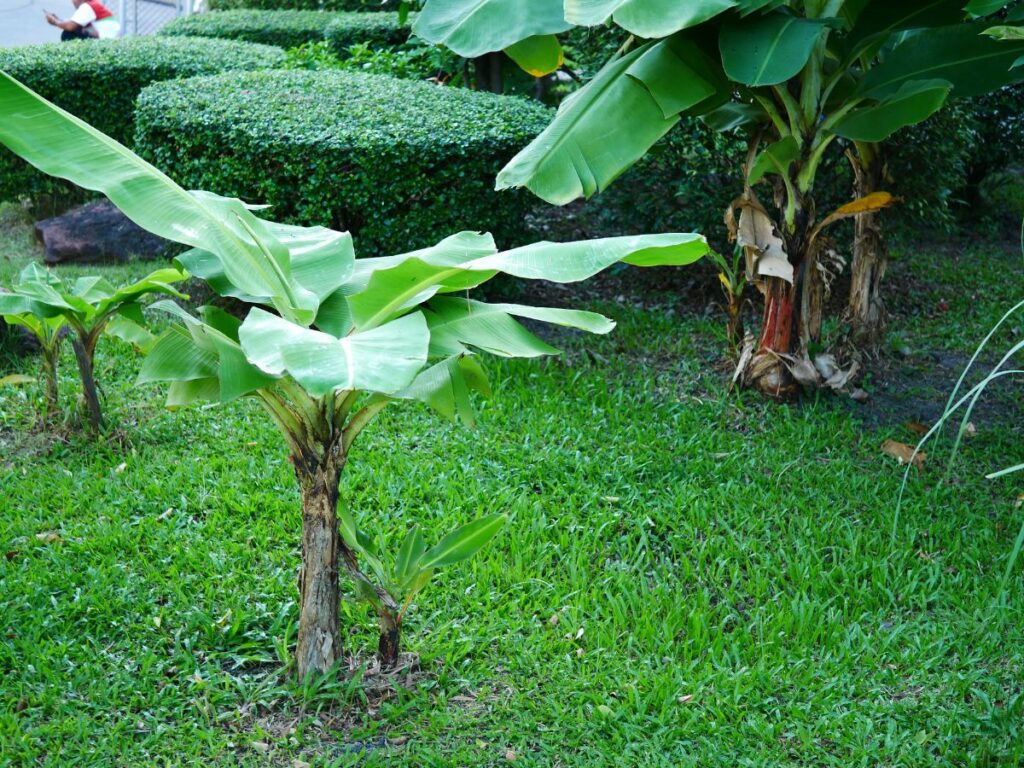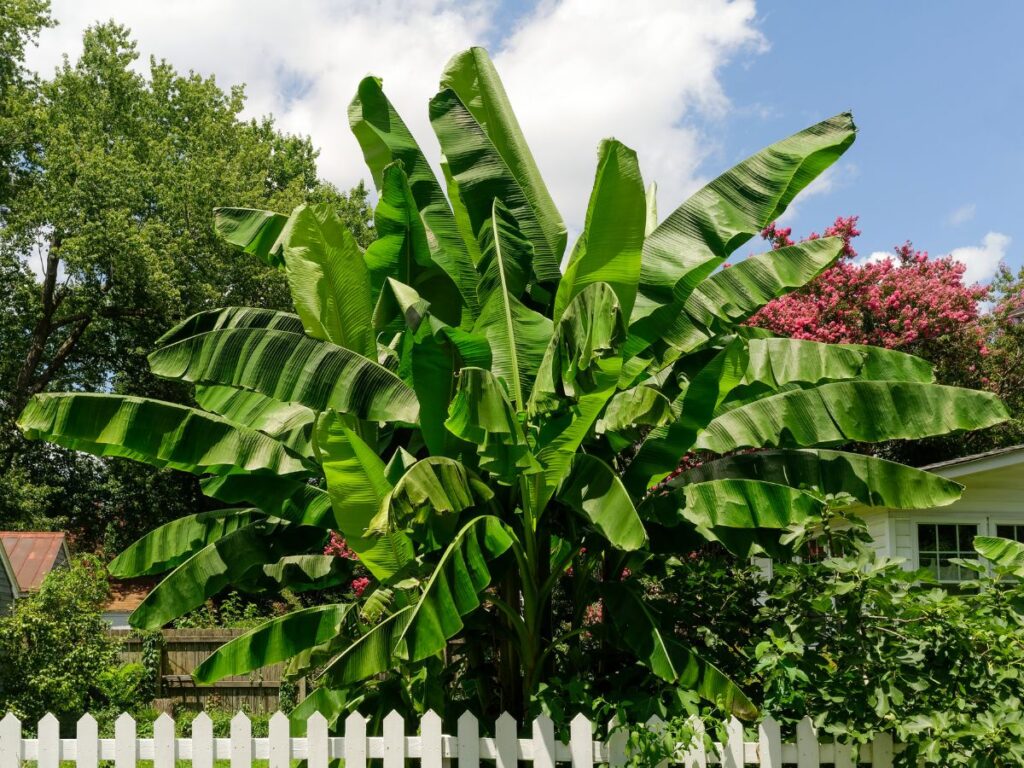Banana trees are more than just tropical fruits—they bring a slice of paradise into your backyard. They add exotic flair to any garden, and some species can even be grown indoors!
With the right variety, you can enjoy lush, broad leaves and vibrant fruits in your home garden.
But before you start imagining banana smoothies from your backyard bounty, it’s important to choose the right type of banana tree for your environment. Not all banana trees are the same, and some are better suited for home gardens than others.
So, how do you decide which banana tree to plant? Let’s dive into the top 10 banana varieties that are ideal for home gardeners, whether you’re aiming for aesthetic appeal, smaller size, cold tolerance, or delicious fruit.
1. Dwarf Cavendish Banana (Musa acuminata)
The Dwarf Cavendish is one of the most popular banana trees for home gardens, and for good reason. This variety typically grows to about 8-10 feet tall, making it much smaller than its full-sized counterparts.
Despite its compact size, it produces full-sized bananas with a sweet flavor. It’s also a great choice for those who want the look of a tropical garden without having to manage a towering plant.
- Why It’s Great: Its manageable size and high banana yield make it perfect for smaller spaces.
- Best Conditions: Prefers warm climates but can be grown indoors in cooler regions with enough light.
2. Ice Cream Banana (Blue Java Banana)
If you’ve never heard of the Ice Cream Banana, prepare to be intrigued. This banana variety is known for its unique blue-tinted peel and a flavor that is reminiscent of vanilla ice cream.
It grows up to 15 feet tall and thrives in tropical or subtropical climates. The bananas themselves are creamy and sweet, making them a favorite for desserts.
- Why It’s Great: The novelty of blue bananas and a delicious, creamy taste.
- Best Conditions: Warm, tropical climates. Needs full sun and well-draining soil.
3. Lady Finger Banana (Musa acuminata)
The Lady Finger Banana is a variety that produces smaller, sweeter bananas than the standard Cavendish. The fruit is slim and compact, usually just a few inches long.
This tree grows up to 12 feet tall and is a prolific fruit producer, often yielding clusters of 12 to 20 bananas per bunch.
- Why It’s Great: Smaller bananas perfect for snacking and sweet, rich flavor.
- Best Conditions: Thrives in warm climates but can handle cooler temperatures better than many other banana trees.
4. Rajapuri Banana (Musa spp.)
The Rajapuri Banana tree is ideal for gardeners looking for a smaller, low-maintenance banana tree. It typically grows between 6 to 8 feet tall and is known for being more tolerant of colder temperatures than many other varieties.
The Rajapuri Banana produces sweet, medium-sized bananas and has a relatively short growing period, making it a favorite for quick harvests.
- Why It’s Great: Tolerates colder weather and has a compact size.
- Best Conditions: Can handle mild frost, making it ideal for regions with variable climates.
5. Red Banana (Musa acuminata)
If you want something exotic and colorful in your garden, the Red Banana is an excellent choice. This tree can grow up to 12 feet tall and produces bananas with a reddish-purple skin.
The fruit itself is slightly sweeter and creamier than typical yellow bananas, and the tree’s deep, burgundy leaves add a striking visual element to your landscape.
- Why It’s Great: Unique reddish-purple bananas and visually stunning leaves.
- Best Conditions: Grows best in warm, tropical conditions but can be grown indoors in cooler areas.
6. Goldfinger Banana (FHIA-01)
The Goldfinger Banana is a newer variety developed to be highly resistant to diseases that commonly affect banana trees.
It’s a medium-sized tree, typically growing up to 10 feet tall, and is incredibly versatile. Goldfinger Bananas are deliciously sweet with a hint of apple-like flavor, making them popular for fresh eating and desserts.
- Why It’s Great: Disease-resistant and bears fruit that’s excellent for fresh consumption.
- Best Conditions: Prefers warm climates and well-drained soil but can handle cooler temperatures.
7. Manzano Banana (Apple Banana)
The Manzano Banana, also known as the Apple Banana, is beloved for its sweet, apple-like taste. It grows up to 12 feet tall and produces smaller, thick-skinned bananas that turn black when fully ripe.
The tree itself is sturdy and relatively easy to care for, making it a great option for gardeners who want flavorful bananas without much hassle.
- Why It’s Great: Sweet, apple-flavored bananas that are great for snacking.
- Best Conditions: Thrives in warm, tropical climates but can handle partial shade.
8. Dwarf Red Banana (Musa acuminata)
If you love the idea of red bananas but need a more compact tree, the Dwarf Red Banana is perfect.
It grows up to 8 feet tall and produces the same reddish-purple bananas as the standard Red Banana, but in a smaller package. This makes it an ideal option for smaller gardens or for growing indoors in large containers.
- Why It’s Great: Compact size with beautiful red bananas.
- Best Conditions: Prefers full sun in tropical or subtropical climates but can tolerate partial shade.
9. Orinoco Banana (Burro Banana)
The Orinoco Banana, also known as the Burro Banana, is a tough variety that can withstand cooler temperatures and even mild frost.
It grows between 12 and 15 feet tall and produces stout, square-shaped bananas with a unique tart flavor when eaten fresh. The fruit can also be cooked, making this a versatile option for culinary enthusiasts.
- Why It’s Great: Cold-hardy and produces versatile bananas that can be eaten raw or cooked.
- Best Conditions: Thrives in warmer climates but can tolerate colder weather better than most other varieties.
10. Musa Basjoo (Japanese Fiber Banana)
The Musa Basjoo, also known as the Japanese Fiber Banana, is an ornamental variety rather than one grown for fruit. It is extremely cold-hardy, able to survive temperatures as low as -10°F when properly mulched.
Though it produces inedible bananas, it’s beloved for its lush, tropical foliage and ability to add a tropical feel to cooler gardens.
- Why It’s Great: Cold-hardy and a great ornamental tree for colder regions.
- Best Conditions: Can thrive in colder climates with adequate protection during winter.
Choosing the Right Banana Tree for Your Home Garden
When it comes to choosing the perfect banana tree for your home garden, it’s important to consider your climate, space, and desired use of the bananas.
Some trees, like the Dwarf Cavendish or Lady Finger, are perfect for smaller gardens or even growing in containers. Others, like the Musa Basjoo or Rajapuri, are ideal if you’re living in a cooler region but still want to enjoy the lush beauty of a banana plant.
If you’re after sweet, delicious bananas for snacking, then the Ice Cream Banana, Manzano Banana, or Goldfinger Banana should be at the top of your list.
But if your priority is aesthetics and you want a show-stopper in your garden, the Red Banana or Dwarf Red Banana offer both beauty and fruit.
For gardeners looking for hardier varieties that can handle a bit of cold, the Orinoco or Musa Basjoo are excellent choices. They won’t leave you disappointed in climates where others might struggle to survive.
Care Tips for Banana Trees
No matter which variety you choose, here are some general tips to ensure your banana tree thrives:
Sunlight: Most banana trees prefer full sun, although some can tolerate partial shade.
Water: Bananas love water, so make sure to keep the soil consistently moist but not waterlogged. Good drainage is key.
Fertilizer: Feed your banana tree regularly with a high-potassium fertilizer to promote healthy growth and fruiting.
Mulching: Mulching around the base of the plant helps retain moisture and regulate soil temperature. This is especially important for cold-sensitive varieties.
Pests: Keep an eye out for common pests like aphids and spider mites. A mild insecticidal soap can help manage these if they appear.
Growing banana trees at home is a rewarding experience that can transform your garden into a tropical paradise.
Whether you’re after fruit or foliage, there’s a banana tree out there that’s perfect for your needs.
With the right care and variety, you could be enjoying homegrown bananas or simply basking in the shade of their wide, beautiful leaves in no time. Just imagine a banana tree in your yard—it’s a little slice of the tropics, no plane ticket required.


